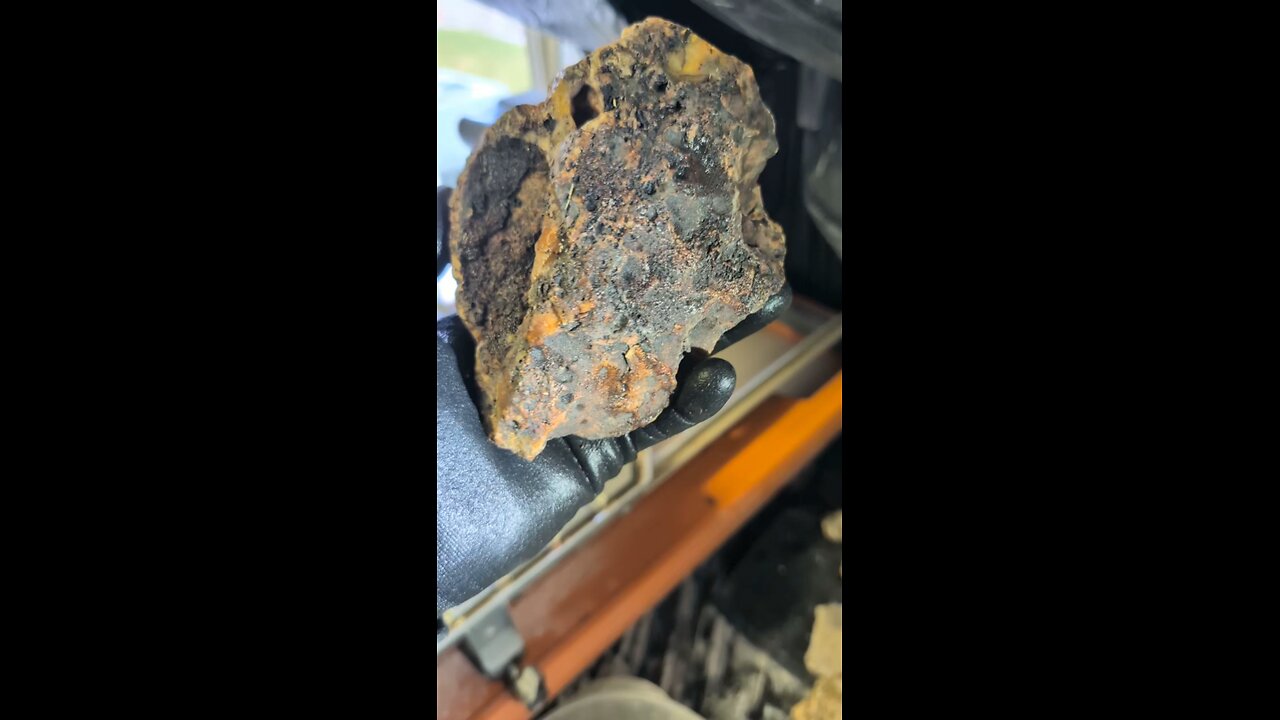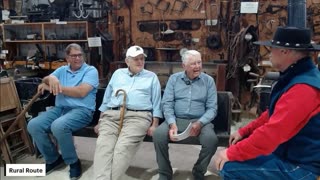Premium Only Content

Big chunk of petrified bark!
Petrified wood is a type of fossil where the organic materials of a tree or tree-like plant have been replaced by minerals, preserving the original structure of the wood in stone form. Here are some key details about petrified wood:
Formation: The process of petrifaction involves several steps:
Burial: The wood must be buried quickly in sediment, usually in environments like river floodplains or volcanic ash deposits, to prevent decay.
Mineralization: Groundwater rich in dissolved minerals, primarily silica (but can also include iron, manganese, or other minerals), seeps into the wood. Over time, the minerals precipitate out of the water and replace the organic material cell by cell, effectively turning the wood into stone while maintaining its original structure.
Recrystallization: The silica often recrystallizes into quartz, preserving the cellular structure of the wood in fine detail.
Composition: While the primary mineral in petrified wood is often quartz, other minerals like calcite, pyrite, or oxides of iron and manganese can also be involved, contributing to the variety of colors seen in petrified wood.
Texture: Petrified wood retains the texture of the original wood, with growth rings, knots, and even bark sometimes visible. The texture can range from fine-grained to coarse, depending on the degree of mineral replacement and the type of wood.
Color: The color of petrified wood varies widely based on the minerals involved in the replacement process:
Silica: Usually results in white, gray, or clear petrified wood.
Iron Oxides: Can give shades of red, yellow, or brown.
Manganese Oxides: Often produce black or dark brown colors.
Copper Compounds: Can result in green or blue hues.
Uses:
Decorative: Petrified wood is popular in home decor, used for making furniture, tabletops, bookends, and as display pieces due to its unique beauty and historical significance.
Jewelry: Slices or small pieces of petrified wood can be polished and used in jewelry, especially when colorful or with interesting patterns.
Scientific Study: It's valuable in paleobotany for understanding ancient forests, plant evolution, and the environmental conditions of the past.
Geological Significance: Petrified wood provides a window into ancient ecosystems, showing what types of vegetation existed millions of years ago. It's also a record of geological processes like volcanic activity, flooding, or changes in river courses that led to the burial and preservation of the wood.
-
 15:10
15:10
Michael Button
15 hours ago $1.02 earnedGroundbreaking Discovery at Giza Pyramids?
24.7K6 -
 18:11
18:11
Tactical Considerations
15 hours ago $0.36 earnedIs This the Best Truck Gun for 2025?
2.32K3 -
 8:37
8:37
The Art of Improvement
20 hours ago $0.52 earnedLife Lessons I’d Tell My Teenage Self
4.06K1 -
 LIVE
LIVE
BEK TV
23 hours agoTrent Loos in the Morning - 9/19/2025
191 watching -
 17:22
17:22
Adam Does Movies
12 hours ago $1.54 earnedIce Road: Vengeance - Movie Review
59.5K4 -
 45:05
45:05
Uncommon Sense In Current Times
17 hours ago $0.55 earnedDarwin vs. DNA | Dr. Nathaniel Jeanson on Creation Science, Evolution & the Case for Genesis
12.1K3 -
 32:19
32:19
The Lou Holtz Show
14 hours agoThe Lou Holtz Show S2 EP18 | Danica Patrick on Fearlessness, Faith & Finding Purpose #podcast
11.6K4 -
 23:41
23:41
The Official Corbett Report Rumble Channel
10 hours agoDiscord Democracy is Coming For Us All! - New World Next Week
8.01K13 -
 49:14
49:14
CharLee Simons presents DO NOT TALK
1 day agoSCREW YOU, ZUCKERBERG (Sam Anthony is back!)
11.5K1 -
 1:04:26
1:04:26
SinCityCrypto
18 hours ago $0.70 earnedAltcoins About to EXPLODE (ETF Approvals)
9.4K1